

The Wilson Inlet is fed from the Denmark and Hay Rivers and is less than a kilometre south of town. Embraced by the Nullaki peninsula on the southern side, this majestic water is divided from the ocean by a sandbar which covers the opening much of the year. Denmark Town, about a kilometre up-river along the Denmark River is on the northern side of the inlet.
For walkers and bikers, the Heritage Rail Trail along the northern side of the Wilson Inlet offers incredible views of the inlet while surrouned by native forests.
The Wilson Inlet is over twenty kilometres long and covers an area of 2,263 sq. km. The quiet and peaceful Inlet has many places to sit and enjoy the view.

![]() Known as Koorabup (Kwoorabup) "The Place of the Black Swan" by the Noongar, the Wilson Inlet is a haven for these majestic birds which are the Icon (on the flag>>) of Western Australia.
Known as Koorabup (Kwoorabup) "The Place of the Black Swan" by the Noongar, the Wilson Inlet is a haven for these majestic birds which are the Icon (on the flag>>) of Western Australia.
The sandbar, for most of the year, divides the inlet from the Southern Ocean, however (almost) every year a channel is dug to reduce the water level of the Inlet (which if left unchecked will flood roads and properties). More information on the sandbar and digging the inlet channel can be found below.
The Inlet has an average depth of 1.8 m below mean sea level, and a maximum depth of about 4 metres below mean sea level. The relatively shallow but expansive size of the Inlet makes it perfect for many species of fish to thrive.
The coastal plain has dense woodland, heath, Jarrah and swamp lands and many species of plants are native only to WA. The soils is made up of clays, gravel, silts and sand with approximately twenty species of mammals, numerous reptiles include tiger snakes and skinks living along the banks of the Wilson Inlet.
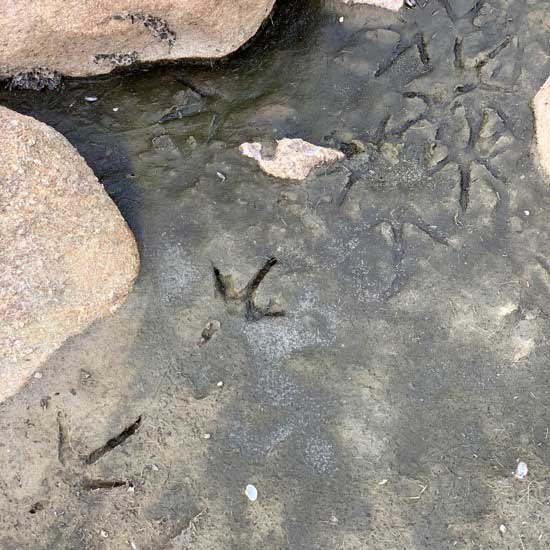
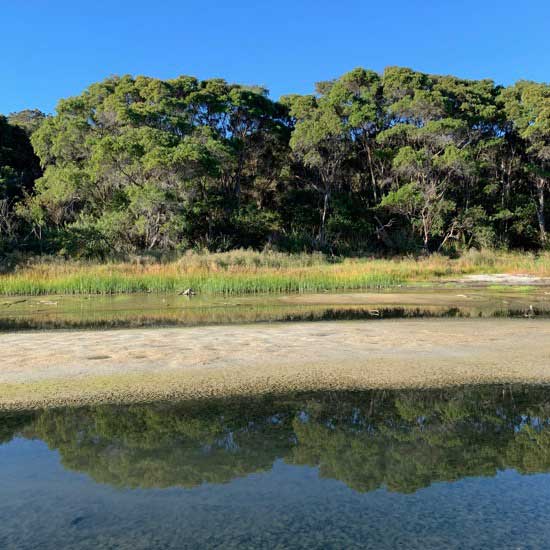
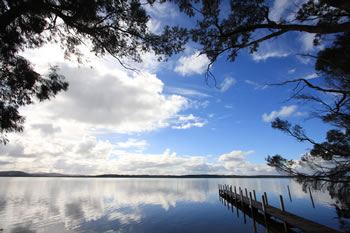
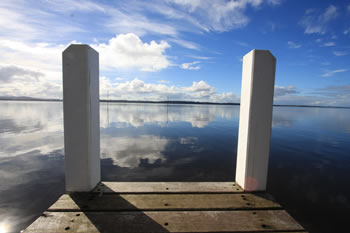
The Wilson Inlet suports much birdlife, in fact 240 species of land, water and marine birds can be seen throughout the year. The Purple Crowned Lorikeet, Port Lincon Ringneck, Western Rosella, New Holland Honeyeater, Tawny Frogmouth, Silvereye and Red Capped Parrot all live here.
Find out more about the migratory and resident shorebirds of the Wilson Inlet from globalnature.org, who created this fantastic resource for bird-loving visitors to Denmark WA. The waterbird species that are regularly seen in this region throughout the year are the Australian Pelican, Little Black Cormorant and Little Pied Cormorant, Black Swan, Grey Teal, Australian Shoveller, Blue Billed Duck, Red-necked Avocet and Silver Gull.

Western Australian Pelican
The Wilson Inlet is home to many species of fish. Sandy Sprat, Cobbler, Pink Snapper, Yellow-eye Mullet, Sea Mullet and Blue Mackerel all in the Inlet. For those who love to fish, this is one of the best locations in Denmark. Take a trip fishing on the Inlet, the Denmark River and Little River with Madfish Charters.
Join John Taylor, an experienced local fishing guide, aboard the "Iona V" a recently launched and custom-made Charter Vessel for a memorable and unforgettable day out on Denmark's pristine inlet and river waterways. Access the Pristine South Coast Estuarine and River Environments (the Wilson Inlet and Denmark River) in the heart of Denmark, WA. Morning or afternoon family-friendly fishing tours (all equipment provided). Bird Watching and Eco Tours. River Cruises. ALL ages welcome. 7 Days a week. The Skipper (your captain) can take up to 5 additional passengers onboard. John has the local knowledge and extensive experience along the south coast to provide you and your family a sensational day out!
The Wilson Inlet is the perfect place to take a boat trip or paddle a kayak or canoe. It is so peaceful out on the inlet, it exudes a sense of calm.
Crusoe Beach, (above) on the northern side of the Inlet, is along the Denmark Heritage Rail Trail. This trail can be followed by foot or bike 6.5 kilometres to the mouth of the Denmark River. The trail hugs the northern side of the Wilson Inlet and leads to Crusoe Beach at the eastern end. Denmark is located a few kilometres up-river on the northern side of the Inlet.
The Wilson Inlet is the heart of Denmark Western Australia. Tap the markers for information about the locations on the Map below.

The Wilson Inlet is periodically opened by digging a channel through Ocean Beach to the ocean. Ocean Beach Lookout is great for seeing the sand-bar opened or closed offering spectacular views of the Wilson Inlet and the Great Southern Ocean.
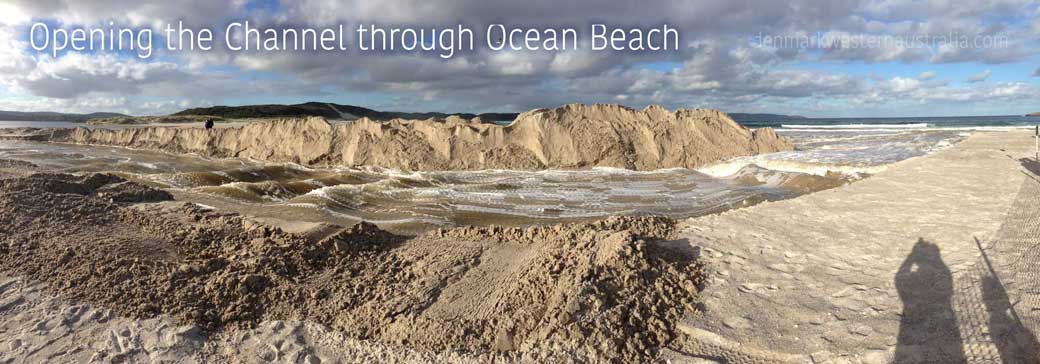

When the channel is open, and the tide is HIGH, the ocean is flowing INTO the inlet, turning the waters a beautiful turquoise blue. At LOW tide, the Inlet is flowing into the Ocean, and the tannin-stained waters flowing out into the ocean are brown.
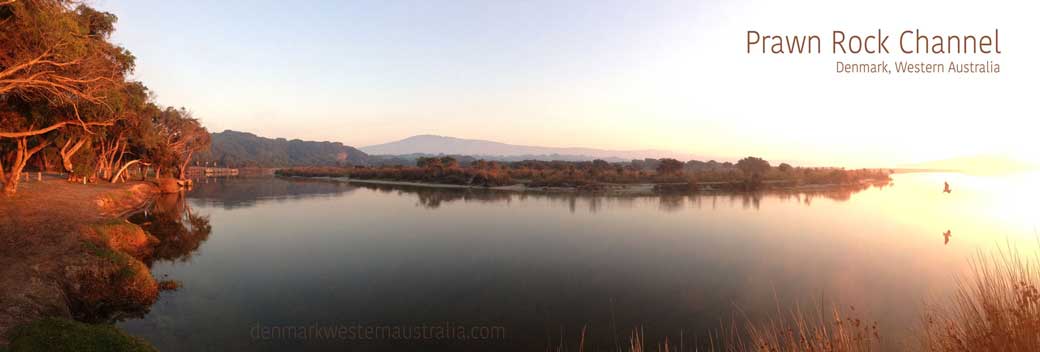
The water level can peak at any time during winter. A big deluge and it can rise quickly and needs to be released... by digging a channel through Ocean Beach.
The Prawn Rock Channel curve (with a fence) is almost underwater in this photo, as the footpath is just becoming submurged. In mid-summer, the water is well below this high-water line.
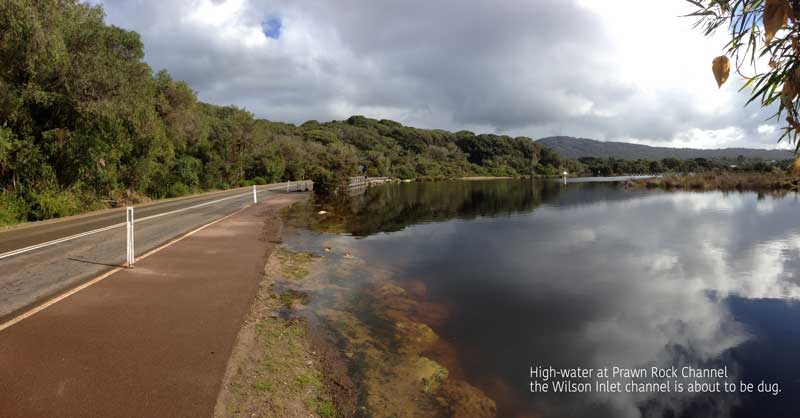
The rivers keep on flowing, the rain keeps on coming, and the Inlet keeps on rising, and falling as channels are dug.
During an open-channel time, the ocean exchange is important to the ecosystems of the inlet. Getting fresh ocean water INTO the inlet injects new life into the Wilson.
Once in a while we get a BIG RAIN before the expected opening and things get a little... over-full. This is the carpark at the northern end of Prawn Rock Channel. As you can see, it's flooded and looks like part of the inlet!
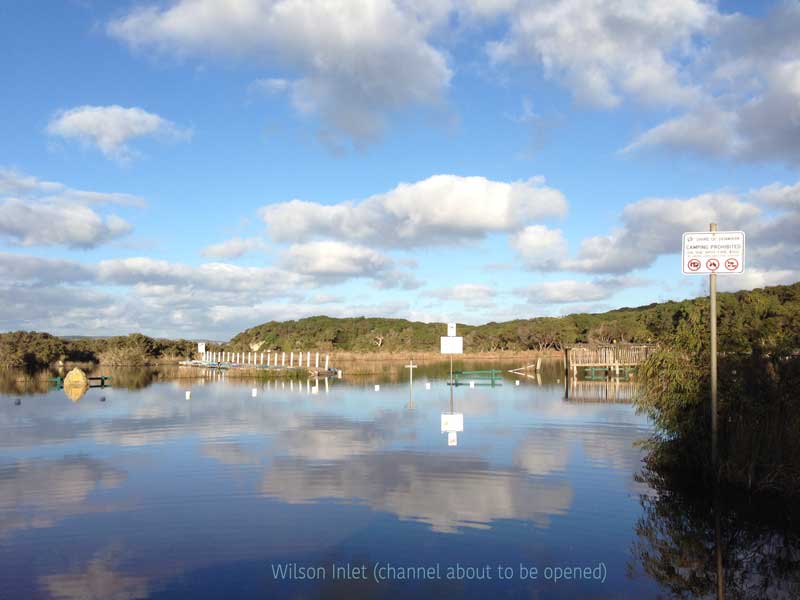
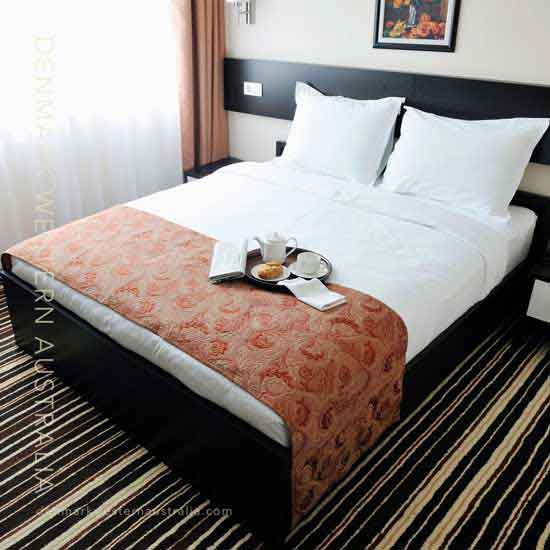 Accommodation
Accommodation  Shopping in Denmark
Shopping in Denmark  Eating in Denmark
Eating in Denmark  Denmark Wineries
Denmark Wineries